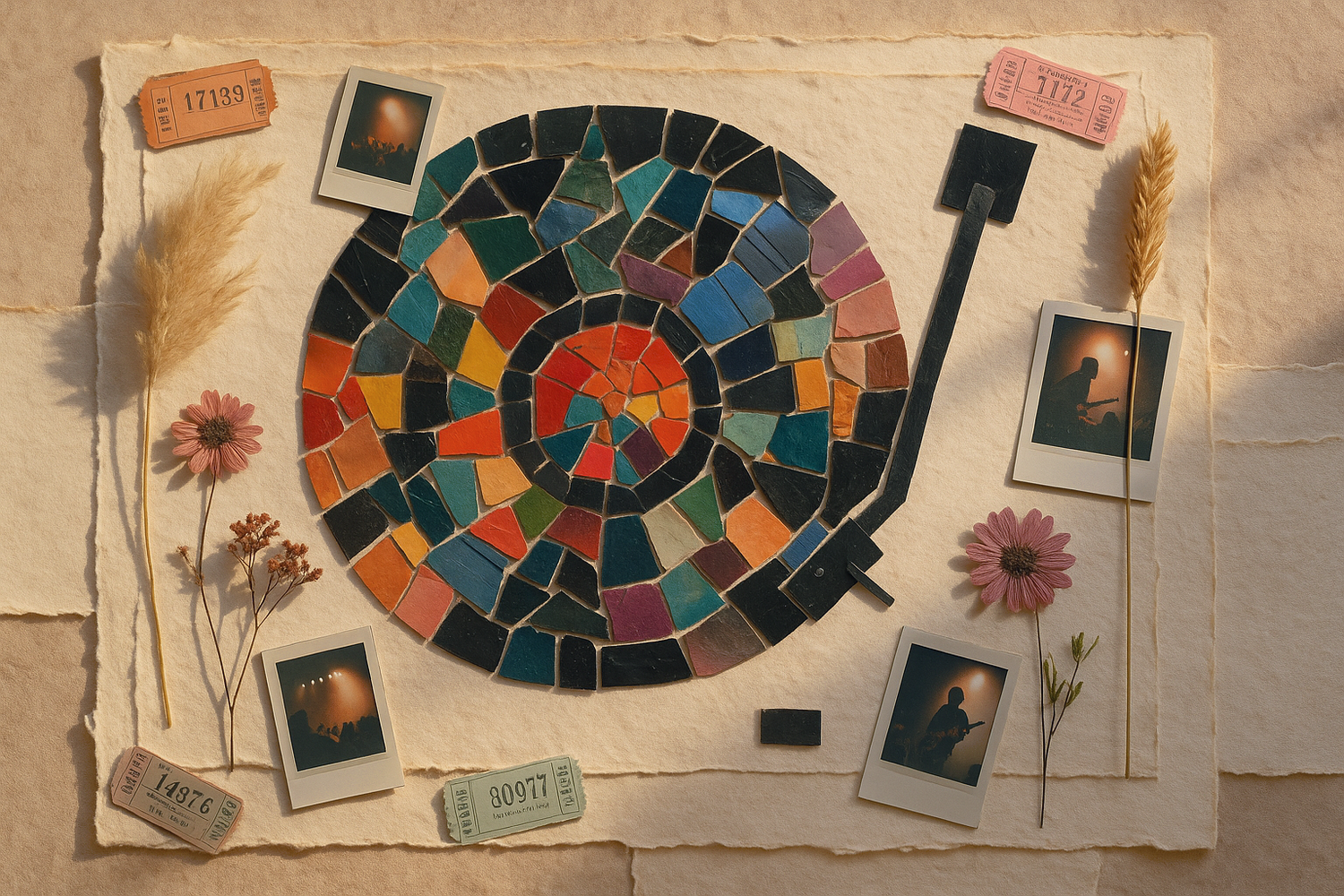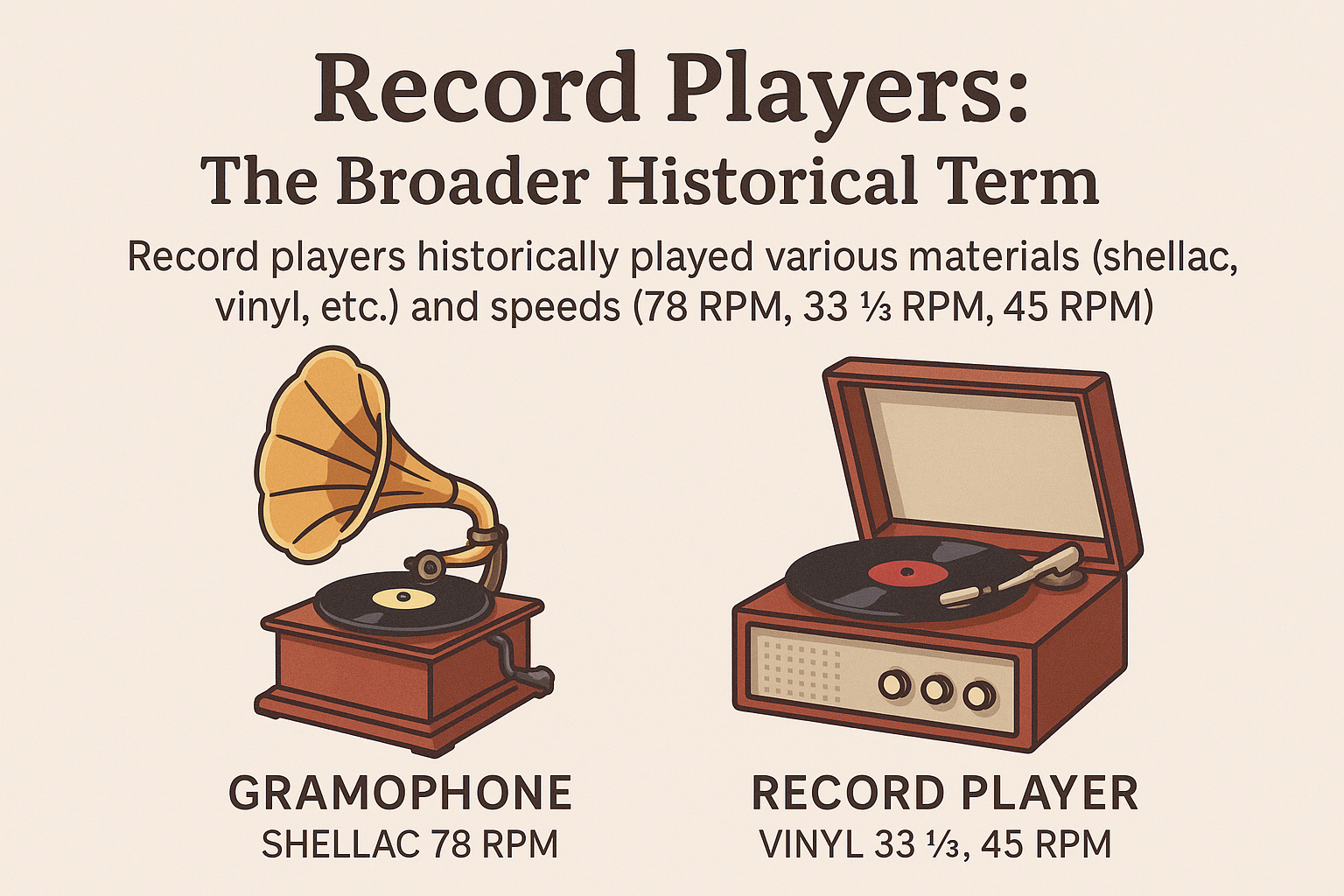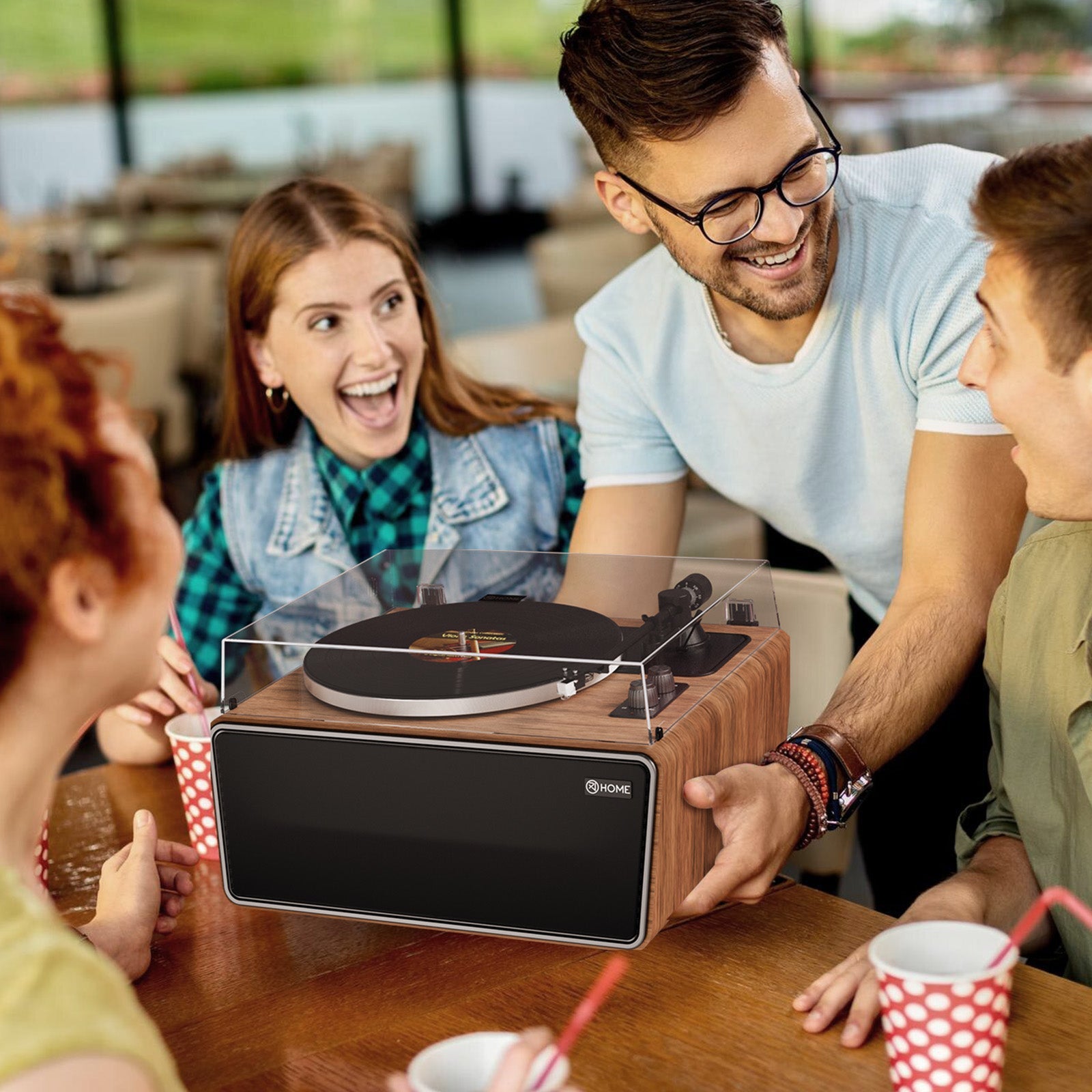Another Father's Day approaches, bringing with it the annual pilgrimage through crowded aisles and online stores, a quest for a gift that transcends mere utility. We can always default to the familiar: another tie to hang in the closet, another power tool that might see use next spring, another bottle of single malt to be dutifully appreciated. These are fine gifts, objects that perform a function or offer a fleeting pleasure. But they are rarely transformative. They don't fundamentally change a routine or open a new door to the self.
But what if you could sidestep the predictable? What if you could give him something that doesn't just sit on a shelf, but actively reshapes his relationship with his own past? What if you could give him a machine that manipulates time itself?

This isn't a flight of fancy from science fiction. The machine is a turntable, and its true function is far deeper than simply playing music. In a world saturated with fleeting digital streams and surgically fractured attention, the deliberate act of playing a vinyl record is a powerful, quiet rebellion. It is a precision device that reconnects a man to the very physics of his own memory, the inherent value of his attention, and the foundational architecture of his identity. For all intents and purposes, it is a time machine. And it might just be the most meaningful gift you’ll ever give.
Principle 1: The Physics of Memory is Physical
The first and most crucial principle to understand is that human memory is not a digital file. It’s a messy, associative, deeply physical, and stubbornly analog process. We often romanticize the "warm, analog sound" of vinyl, but this common refrain misses the fundamental point. The magic isn't just in the sonic texture; it's in the physicality of the entire process—a concept modern life has systematically stripped away.
A song on a streaming service is a perfect abstraction—weightless, formless data pulled from a distant server, existing nowhere and everywhere at once. An album on vinyl, however, is a tangible, undeniable object. It has heft in the hands, a reassuring solidity. There is the specific resistance of the shrink-wrap giving way, the faint, layered smell of aged cardboard, fresh ink, and the vinyl itself. The sheer real estate of the 12x12 album art is a canvas that demands to be seen and held, not swiped past as a thumbnail. These are not just nostalgic features; they are powerful sensory data points for the soul.
The ritual is the key that unlocks this deeper connection. You don’t just "click." You engage in a sequence of deliberate actions: you select the album from the shelf, a conscious choice. You remove the disc from its sleeve, feeling its delicate, grooved surface. You clean it, a small act of care and preparation. You place it on the platter. Finally, you lower a needle into a microscopic groove and witness a purely physical process—a diamond stylus vibrating in a plastic canyon—translating stored motion into glorious sound. This multi-step ritual is a form of forced mindfulness. For the three or four minutes of a 45 RPM single, or for the twenty-plus minutes of a full LP side, you are tethered to the present moment. Your attention isn't just requested; it's required.
This focused physical engagement is what triggers a richer, more profound form of recall. The brain doesn’t just remember the melody; it remembers the weight of the album in its hands, the specific chair it was sitting in, the quality of the afternoon light, the person who was there. The perceived "inconvenience" of vinyl isn't a bug; it's the entire point. It's a conscious act of deliberate engagement in an era of passive, frictionless consumption, and it is this very engagement that unlocks the door to a more vivid, emotionally resonant past.

Principle 2: The Economics of Attention is Scarcity
We live in an age of manufactured infinity, a tyranny of limitless choice. Streaming services offer us 100 million songs, a number so vast it’s functionally meaningless. This paradox of choice induces a subtle, persistent anxiety, devaluing the music itself and leading to overwhelmingly shallow listening habits. We skip, we shuffle, we add songs to monolithic playlists we’ll never have the time or inclination to revisit. Music becomes auditory wallpaper, a background hum rather than a focal point.
A turntable is the perfect antidote. It operates on the immutable principle of scarcity. You cannot easily skip a track. To do so requires getting up, lifting the tonearm, and attempting a clumsy drop on a different band—a hassle most people avoid. By design, you are committed to the artist's vision for an entire album side. This powerful limitation is a gift. It single-handedly restores the album to its intended status as a narrative art form, a complete, curated statement with an intended emotional arc. Suddenly, the deep cuts—the forgotten third track on side B that never made the radio—are given space to breathe, revealing their hidden genius. The listening experience shifts from a fleeting, horizontal survey to a deep, vertical, immersive conversation between the artist and the listener.
This enforced scarcity of choice dramatically elevates the value of our attention. By forcing us to commit, the turntable re-trains our brains. It teaches us to listen again, not just hear. It’s a direct form of counter-programming to the modern condition of endless, meaningless choice. It reminds us that the most valuable things in this life—in music, in art, and most certainly in human relationships—are those precious few to which we grant our undivided, undistracted attention. Giving a turntable is giving the gift of focus, a resource more scarce and more valuable than any other in the 21st century.
Principle 3: The Architecture of Identity is a Shelf
Look at a man’s digital music library, and you see almost nothing of the man himself. It’s an ephemeral list of file names in a cloud, as personal as a bank statement and just as ethereal. It has no presence, no history, no story to tell on its own.
Now, look at a man’s record shelf. You are looking at the physical architecture of his life.
Each spine is a chapter, a dog-eared bookmark in time. That worn copy of Led Zeppelin IV isn't just an album; it’s the raw, unbridled rebellion of his teenage years. The pristine Japanese pressing of Kind of Blue is the sound of his first sophisticated apartment and his attempt to become a more worldly man. The James Taylor record with the frayed corners is what he played on a loop to calm you down when you were a crying baby. A record collection is a tangible autobiography, a physical timeline of one's own evolving taste, passions, triumphs, and heartbreaks. It says, "This is what mattered to me. This is what shaped me. This is my story, etched in vinyl."
Unlike a digital account that simply vanishes with a forgotten password or a canceled subscription, a record collection is a legacy. It is a physical archive that can be touched, explored, shared, and, most importantly, passed down. Imagine a grandchild pulling out a copy of Abbey Road and asking, "What's this?" That question is an invitation, a bridge across generations. The collection becomes a catalyst for storytelling.
To be sure, this is a hobby that can seem intimidating. The gear can be expensive and the quest for original pressings can become an obsession. But it doesn't have to be. Excellent, accessible turntables are readily available from dedicated audio companies like Xenonjade.com, and the pure joy of digging through dusty crates at a local record store to unearth a $5 gem is a core, democratic part of the experience. The gift isn't about fostering snobbery or audiophile perfectionism; it's about laying the first brick in the foundation of a physical legacy. When you give him a record—perhaps one that’s meaningful to both of you—you are adding a new, shared chapter to his very personal, physical history.
The Ultimate Gift: Shared Time
In the end, the endless debate over the technical merits of analog versus digital sound quality is a grand red herring. A turntable is not about achieving a "better" or more accurate sound; it's about facilitating a better, more meaningful human experience.
It is a machine that slows down time, that demands focus as a price of admission, and that makes memory a physical thing you can hold in your hands and pass on to someone you love. It gives a father a tool to reconnect not just with the music of his past, but with the younger version of himself who was there when he first heard it. More importantly, it gives him a tangible, inviting way to share that man, and all of his stories, with you.
You aren't just giving him a record player. You are giving him a conversation starter. You are giving him a storyteller. You are giving him a tangible, spinning link to his own history. You are giving him an invitation to share his time, and his stories, with you. You are giving him the gift of time itself.





Leave a comment
All comments are moderated before being published.
This site is protected by hCaptcha and the hCaptcha Privacy Policy and Terms of Service apply.